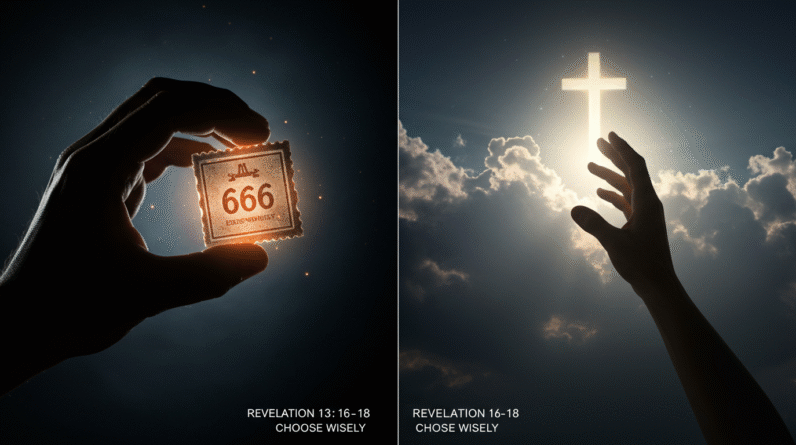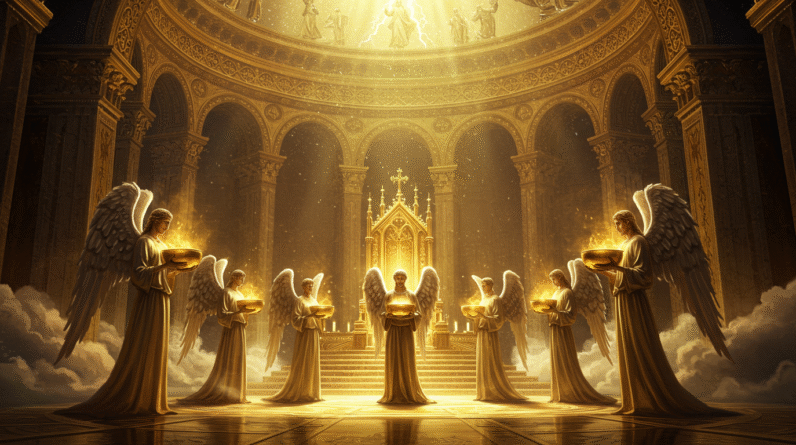Explore ‘The Image Of The Beast: The Danger Of False Worship — Revelation 13:14,’ examining idolatry’s deception. It urges reflection on spiritual priorities today.
The Image of the Beast: The Danger of False Worship — Revelation 13:14
Introduction: Setting the Scene
When diving into the intricate world of biblical prophecy, Revelation stands out as an enigmatic book full of symbols and visions that can seem veiled to the modern reader. Yet, within its pages lies an array of messages meant to guide, warn, and inspire believers through the ages. Revelation 13:14 introduces us to one of the most haunting images: the Image of the Beast. This vision underscores the peril of false worship, echoing through history as a reminder of spiritual fidelity and discernment.
In this particular passage, the imagery unfolds with striking detail. The passage states, “And he deceiveth them that dwell on the earth by the means of those miracles which he had the power to do in the sight of the beast; saying to them that dwell on the earth, that they should make an image to the beast, which had the wound by a sword, and did live.” It’s a dramatic and potent scene calling believers to attention regarding the dangers of idolizing anything other than God.
Why it Matters: Contextual Significance
The vision of the Image of the Beast serves as a potent warning against false worship and the deceptive allure of idolatry. Such themes are not confined merely to the historical or the abstract but have tangible implications for the lives of believers today. In the context of Revelation, this image represents the ultimate test of faithfulness, a symbol for the challenges and moral decisions faced by early Christians and reflective of those we navigate today.
As we explore, keep in mind that Revelation serves as both a historical document and a prophecy, with the Image of the Beast acting as a cautionary tale. Its message of endurance, faith, and discernment is still relevant for contemporary believers amidst today’s spiritual and moral ambivalences.
Exploring the Vision in Depth
Summary of Key Symbols
In understanding the image of the beast, we must first decipher the key symbols presented in Revelation 13. The beast, often interpreted as a representation of destructive worldly powers opposed to God, uses deception to lead people into idolatry. The image created in its honor represents idolatrous systems, the allure of temporal power, and false authority. The ability of the beast and its image to perform miraculous acts underscores the seductive power such falsehood can wield.
The beast from the sea, as introduced earlier in the chapter, symbolizes oppressive empires, while the second beast — one associated with false prophets — aids in constructing the image. This setup creates a trinity of deception, mirroring the Holy Trinity, yet its purpose is to mislead and ensnare.
Contextual Background
To better grasp the depth of this vision, we consider the historical backdrop of its writing. Traditionally attributed to John the Apostle, Revelation was penned during a time of severe persecution under the Roman Empire, often viewed as the beast itself. Emperors demanded allegiance often manifesting as imperial cults, where Christians were commended to pledge their worship to the emperor. Such historical parallels underscore the stark warnings against false worship.
Throughout biblical history, the image of the beast acts as an archetype of false worship found in earlier texts, such as that of Nebuchadnezzar’s golden statue in Daniel 3. These historical reverberations illuminate the enduring nature of such conflicts between divine faithfulness and worldly power.
Interpretation
When interpreting Revelation’s vision, it’s essential to explore both its literal and allegorical meanings. The image of the beast can be seen as something that goes beyond literal idols — it symbolizes any force or notion that detracts from divine worship. It reminds readers that allegiance should not be divided between God and secular powers.
This vision ultimately reinforces the central message of Revelation: perseverance in faith amidst trials, and the promise of eventual divine victory over evil. The vision calls for discerning spiritual insight, recognizing the allure of false powers that may seem benevolent or miraculous. It’s a clarion call to remain steadfast in the commitment to the divine, despite the ease of distractions.

Relevance for Today’s Readers
Spiritual Insight
The core spiritual insight drawn from Revelation 13:14 is one of vigilance and steadfastness. The simple yet profound lesson asks believers to examine where they place their trust and worship. Our world offers countless distractions and idols—material, ideological, even technological—that can obscure our spiritual journeys.
This vision encourages believers to identify these modern “images of the beast” and remain rooted in their faith. It’s an urging call to discern the divine amid noise and to remain committed to values that transcend worldly allurements. Every age has its challenges, and this passage serves as a guide to ethical and spiritual wholeness.
Application in Daily Life
Applying the message of the Image of the Beast to daily life involves constant reflection on your spiritual priorities. It prompts questions about loyalty and where one’s allegiances truly lie. It might involve evaluating personal values against societal norms or even identifying personal “beasts” that vie for attention and devotion contrary to God.
Cultivating this awareness is a lifelong endeavor and requires mindfulness in daily decisions. It involves creating spaces of stillness within your heart where divine presence can dwell, free from the static of false worship. This might mean engaging in regular spiritual practices or returning to scripture as a guide through life’s complexities.
Supporting Verses and Cross-References
Related Verses
The themes in Revelation 13:14 resonate deeply with other biblical teachings. Consider Ephesians 6:12, which highlights the spiritual battles believers face, not merely against flesh but against deeper, unseen forces. This verse provides further insight into the nature of the conflicts depicted in Revelation.
Similarly, 1 John 4:1-6 urges believers to discern spirits and uphold truth rather than being led astray by every claim to spiritual authority. Such references enrich our understanding of the passage’s call for clarity amidst deception, underscoring the need for spiritual steadfastness.

Conclusion: Reflection on the Vision’s Message
Summarize Key Takeaways
The haunting vision of the Image of the Beast in Revelation 13:14 ultimately implores believers to remain vigilant against the seductive power of false worship. It emphasizes the necessity of focusing worship solely on God, despite the allure of worldly powers and temptations. The enduring struggle between true and false worship depicted is timeless, a battle still relevant in our spiritual journeys today.
Encourage Further Reflection
As you meditate on this vision, consider its significance in your life. Reflect on the spiritual battles you face and the ways in which the message might speak to contemporary challenges. Engaging with other parts of scripture can offer broader wisdom and enhance understanding, providing further grounding in faith and clarity.
Call to Faith
In moments of trial, may you find the courage to stand firm, assured of God’s ultimate victory. Let this vision remind you of the unwavering power of divine truth over temporal fallacies, inspiring faith and guiding you toward spiritual resilience.







